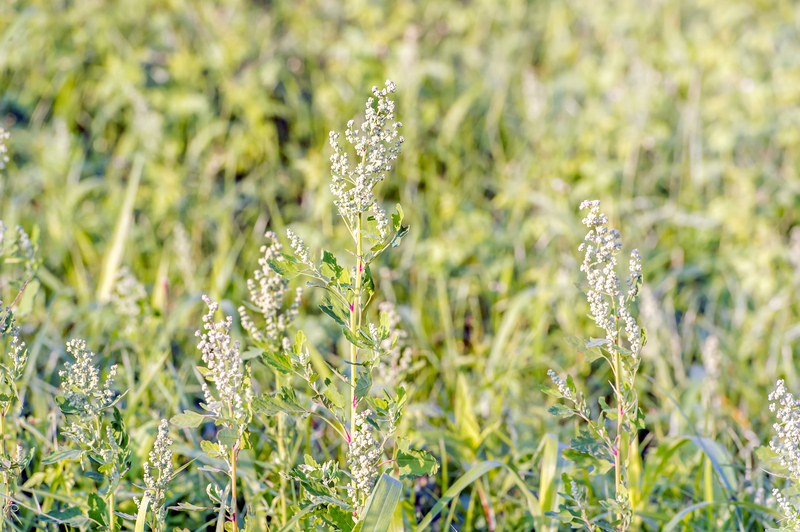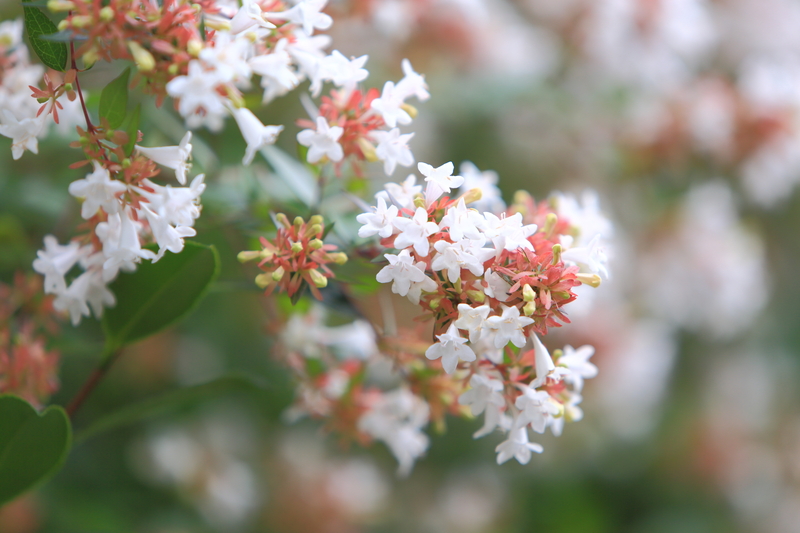From Scraps to Riches: Revitalizing Soil with Organic Waste
Posted on 24/09/2025
From Scraps to Riches: Revitalizing Soil with Organic Waste
Healthy, fertile soil forms the foundation of sustainable agriculture and thriving home gardens. Yet, around the world, soil degradation and declining fertility threaten food security, natural ecosystems, and even the air we breathe. Fortunately, a transformative solution lies in what many consider waste: organic matter such as food scraps, yard clippings, and agricultural residues.
This comprehensive guide explores how revitalizing soil with organic waste not only diverts materials from landfills but also restores soil fertility, battles climate change, and boosts crop yields. Discover the science, practical methods, and inspiring results of, quite literally, turning trash into treasure for our planet.
Understanding Soil Health: The Backbone of Life
Before diving into the methods of enriching soil with organics, it's crucial to grasp why soil vitality matters -- for ecosystems, food production, and our planet's future.
What is Soil Health?
Soil health refers to the soil's ability to sustain plants, animals, and microbial life over time. Healthy soil delivers:
- Nutrient cycling for supporting crops and wild plants
- Water filtration for cleaner groundwater and erosion prevention
- Disease suppression, reducing the need for chemical pesticides
- Carbon storage, helping mitigate climate change
However, decades of heavy tillage, chemical fertilizers, and monoculture farming have left soils depleted, compacted, and less able to support life. Revitalizing soil with organic waste addresses these issues from the ground up.
Soil Degradation: A Growing Crisis
Globally, about one-third of our soils are moderately to highly degraded due to erosion, nutrient depletion, and pollution. The consequences are severe:
- Lower crop yields and higher food prices
- Increased vulnerability to floods, droughts, and landslides
- Loss of biodiversity
- Higher greenhouse gas emissions
The United Nations warns that without drastic action, 90% of the world's topsoil could be at risk by 2050. Yet, amidst this crisis, lies an opportunity: using organic waste to rebuild soils and restore ecological balance.

The Science Behind Organic Waste: From Decay to Fertility
So, how do kitchen scraps and yard trimmings go from being garbage to gold? The answer lies in natural processes that have, for millennia, governed the cycles of life and death in ecosystems.
What is Organic Waste?
Organic waste includes any material that comes from living sources and can decompose. Common examples include:
- Fruit and vegetable peels
- Coffee grounds and eggshells
- Grass clippings and leaves
- Wood chips and sawdust
- Animal manure (from herbivores)
Redirecting these scraps from landfills to soil revitalization creates a closed nutrient loop, mimicking nature's efficiency.
The Decomposition Process: Nature's Recycling System
When organic matter is added to soil, tiny armies of bacteria, fungi, earthworms, and other organisms feast on it. This process, known as decomposition, breaks complex compounds into simpler nutrients that plants can absorb:
- Carbon provides fuel for soil microbes and helps build stable soil organic matter (humus).
- Nitrogen, phosphorus, and potassium are essential plant nutrients released as organics decay.
- Humus, the end product, improves soil structure and long-term fertility.
These transformations are why revitalizing garden soil with organic waste produces healthier, more vibrant plants compared to conventional practices.
Organic Waste in the Carbon Cycle
When left in landfills, organic waste breaks down anaerobically (without oxygen), releasing methane -- a potent greenhouse gas. But when composted or incorporated into soil, it is metabolized by microbes, turning waste into stable carbon compounds and releasing only trace amounts of greenhouse gases--a win for both climate and soil!
Methods for Revitalizing Soil with Organic Waste
There are several practical, scalable ways to use organic materials for improving soil health -- from simple home composting bins to complex farm-scale manure management systems. Let's explore the most effective options for enriching your soil with organics.
1. Composting: The Gold Standard in Soil Revitalization
Composting is the controlled aerobic decomposition of organic materials, resulting in a nutrient-rich, crumbly product called compost. It's the most popular method for backyard gardeners and farmers alike. Compost boosts soil structure, water retention, fertility, and biological activity.
How to Compost at Home
- Mix "greens" and "browns": Greens (fruit peels, fresh grass, coffee grounds) offer nitrogen; browns (leaves, cardboard, wood chips) supply carbon.
- Maintain moisture: Your compost pile should feel like a wrung-out sponge.
- Turn regularly: Provide air by mixing every 1-2 weeks. This speeds up decomposition and prevents odors.
- Patience pays: Finished compost is dark, earthy-smelling, and ready to spread in 2-6 months.
*Pro Tip: If you lack outdoor space, try vermicomposting with worms--perfect for apartments and small kitchens.
Compost Application in Gardens and Farmland
- Vegetable gardens: Apply 1-3 inches of finished compost to beds in spring or fall and gently mix into the topsoil.
- Lawns: Topdress with a thin layer of compost to improve turf health and resilience.
- Orchards & fields: Add compost during planting or as a side-dressing to perennial crops.
2. Mulching: Protect, Nourish, and Transform the Soil
Covering soil with organic mulch (like leaves, wood chips, or straw) creates a protective blanket that reduces weeds, locks in moisture, and feeds soil life as it breaks down. Over time, mulch layers are decomposed by fungi and microbes, releasing nutrients and enhancing soil fertility.
3. Green Manures and Cover Crops
Instead of throwing away crop residues or yard clippings, why not plow them back into your soil? Cover crops (such as clover or rye grass) are grown specifically to be cut down and incorporated into the soil. These "green manures":
- Add organic matter and nitrogen to fields between cash crops
- Reduce erosion and suppress weeds
- Encourage a healthy population of beneficial soil microbes
This technique is widely used in regenerative agriculture and risks little investment for huge soil improvement paybacks.
4. Sheet Composting (Lasagna Gardening)
This low-effort technique layers organic materials directly onto garden beds -- alternating "green" nitrogen-rich layers with "brown" carbon-rich layers. Over several months, soil organisms break down the materials in place, gradually building rich, dark soil. Sheet composting is ideal for starting new beds or reviving depleted lawns.
5. Using Animal Manures--With Care
Animal manure, especially from herbivores like cows, horses, or chickens, is a traditional source of nutrients and organic matter for soils. Properly composted manure can:
- Add vital nutrients (especially nitrogen and phosphorus)
- Build soil structure and resist compaction
- Increase beneficial microbial activity
Important: Only use manure that has been fully composted to avoid plant pathogens and minimize weed seeds. Raw manure can harbor harmful bacteria and is best suited for use on ornamental (not edible) crops unless given ample time (at least 90-120 days before harvest).
From Home Gardens to Global Farms: Success Stories of Soil Revitalization
What does revitalizing soil with food waste and organic matter look like in practice? Here are real-world examples where organic waste strategies have led to remarkable improvements in soil health and productivity.
Urban Gardening Movements
In cities worldwide, community gardens and urban farms turn residents' food scraps into compost. These initiatives have led to:
- Higher vegetable yields and improved food security
- Cleaner neighborhoods (diverting waste from landfills)
- Community engagement and education about sustainability
Agricultural Regeneration: The Rodale Institute
The Rodale Institute, a pioneer in organic farming, has shown that applying compost, cover crops, and manures over decades creates:
- Rich, dark soils teeming with microbial life
- Stable yields even during drought years thanks to better water-holding capacity
- Higher levels of soil carbon, mitigating the farm's climate impact
African Smallholder Innovations
In parts of Africa facing severe soil exhaustion, simple techniques like incorporating maize stalks, banana peels, and animal manure into fields have led to:
- 30-50% higher maize yields than with synthetic fertilizer alone
- Improved resilience to erratic rainfall
- Increased family income and regional food security
The Benefits of Revitalizing Soil with Organic Waste
- Enhanced Soil Structure: Organic matter increases porosity and aggregation, making soils looser and easier for roots to grow.
- Greater Water Holding Capacity: Organically enriched soil carries more moisture, crucial during dry periods.
- More Nutrients: Slow-releasing compost and organics feed plants throughout the growing season, reducing the need for synthetic fertilizer.
- Pest and Disease Control: Healthy, biologically active soils suppress harmful organisms and foster beneficial ones.
- Climate Change Mitigation: By storing organic carbon in soil, we reduce atmospheric CO2 and methane compared to landfill disposal of waste.
- Waste Reduction: Diverting organic material from landfills cuts municipal costs and pollution.
Best Practices for Adding Organic Waste to Soil
What Should You Add?
- Vegetable and fruit scraps (no meat, dairy, or grease!)
- Coffee grounds, tea bags (without plastic)
- Eggshells, nutshells
- Leaves, herbaceous garden trimmings, grass clippings
- Composted manure from herbivores, if available
What to Avoid
Not all waste is soil-friendly. Avoid adding:
- Meat, bones, and dairy (attract pests, slow to break down)
- Diseased plant material
- Weeds with mature seeds
- Pet waste (cat, dog): can contain harmful pathogens
- Large volumes of citrus peels/onions (slow to compost)
Additional Tips for Success
- Chop bulky materials to speed decomposition
- Layer or mix waste with soil/browns for even breakdown
- Keep soil or compost piles moist, not soggy
- Monitor for smells: Aerate and rebalance if odors develop
- Rotate applications: Don't overload one area with compost

Frequently Asked Questions About Revitalizing Soil with Organic Waste
How long does it take for organic waste to improve soil?
Benefits can appear within a few months, especially with well-rotted compost. Full transformation (noticeable change in soil structure, fertility, and life) may take 1-2 years of regular amendment but offers lasting rewards.
Can I use organic waste directly in my garden?
Certain wastes (like shredded leaves or grass clippings) can be used as mulch. Most food scraps should be composted first to avoid unpleasant odors and pests.
Does organic matter attract pests or rodents?
Manage pests by covering food waste, avoiding meats/dairy, and mixing with "browns." A well-balanced compost pile will seldom attract rodents.
How much organic waste should I add?
Start with a half-inch to two inches of compost/mulch per year, depending on your soil needs and crop type. More can be added for very poor soils or new beds.
Is composting or direct amendment better?
Composting is safer and more controlled, while direct application (sheet composting, cover cropping) works for certain wastes and situations. Often, the best approach combines both!
Conclusion: Small Scraps, Big Impact!
Every coffee filter, carrot peel, or lawn clipping you divert from the trash helps revitalize the soil beneath your feet. Whether you cultivate a home garden, manage a farm, or participate in a community compost project, your efforts return vital nutrients and life to soils that feed our world. By embracing revitalizing soil with organic waste, we transform what was once considered trash into a rich resource--a legacy for future generations and a healthier planet.
Ready to start transforming your scraps into riches? Begin today--your soil (and the Earth) will thank you!



